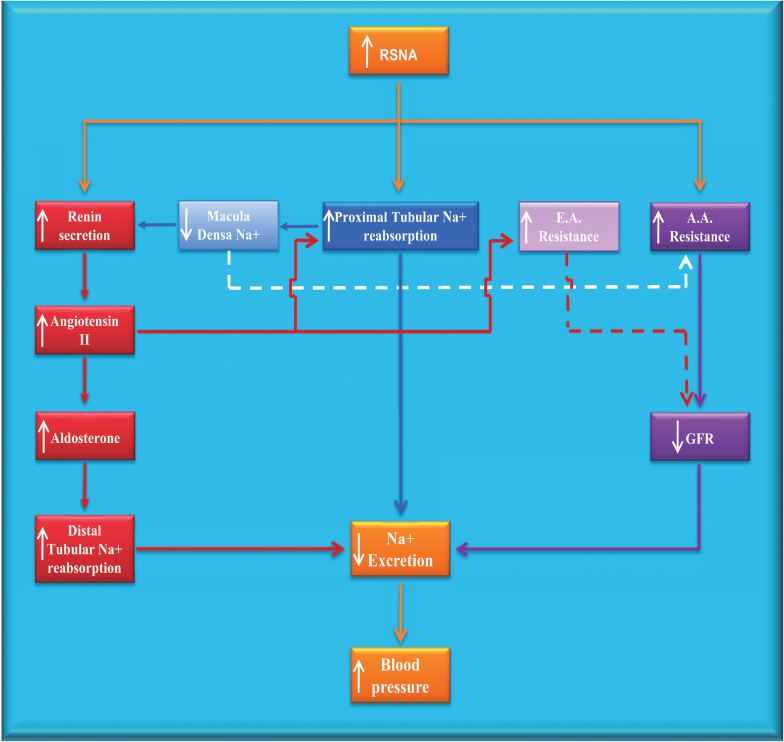Figure1.
Association of renal sympathetic activity with other regulatory systems for blood pressure. Increased RSNA leads to chronic increases in blood pressure by decreasing sodium excretion (orange boxes and lines). The 3 major pathways by which changes in RSNA affect sodium excretion are through alterations in activation of the renin–angiotensin system (red boxes and lines), sodium reabsorption (blue box and line), and glomerular hemodynamics (purple boxes and lines). Light blue and light purple lines represent mechanisms indirectly affected by RSNA. Continuous lines represent stimulatory effects; dotted lines reflect inhibitory effects. Abbreviations: A.A., afferent arteriole; E.A., efferent arteriole; GFR, glomerular filtration rate; RSNA, renal sympathetic nerve activity. (Adopted from (Iliescu R, Lohmeier TE, Tudorancea I, Laffin L, Bakris GL. Renal denervation for the treatment of resistant hypertension: review and clinical perspective. American Journal of Physiology-Renal Physiology 2015; 309(7):F583–F594).)

